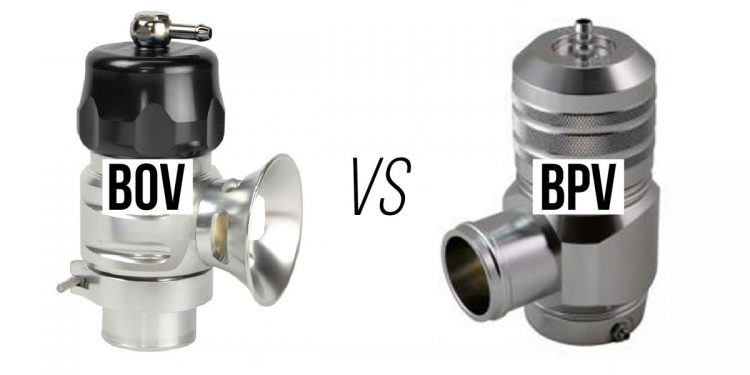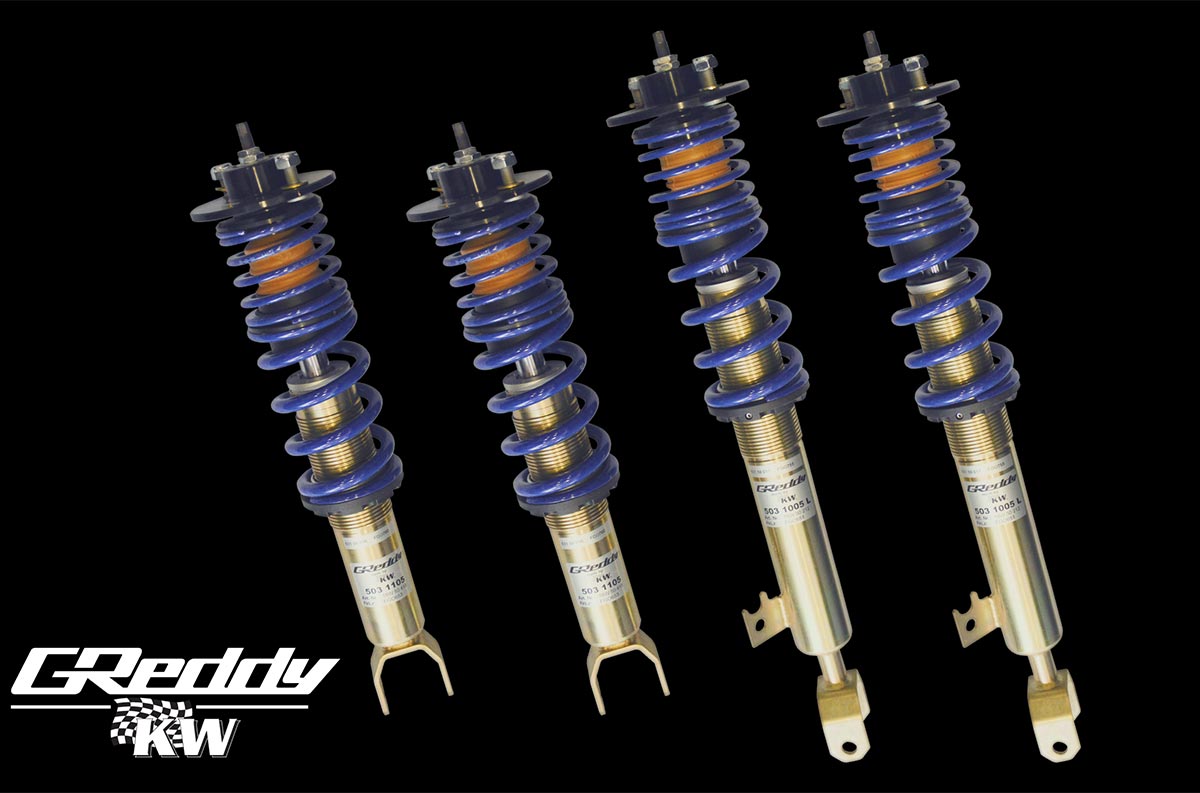As you probably know, turbocharged cars are more popular now than ever before. Much of the reason why is due to stricter emissions standards set by governments across the world, many of which can be extremely difficult to meet with a large naturally-aspirated engine. To meet these tougher emissions standards, many automotive manufacturers are using smaller turbocharged engines. These smaller turbo engines output significantly fewer emissions than a larger naturally aspirated engine, especially at low throttle amounts. One of the excellent benefits of having a turbocharged engine is the massive world of tuning that it opens up.
Among enthusiasts who are looking to tune their turbocharged engine, there is enormous confusion about what a blow-off valve (BOV) is and how it’s different than a bypass valve or diverter valve (BPV). A blow-off valve or bypass valve is used in forced induction systems so that when the throttle body closes, the air that increases and pressurizes within has a way to escape. In order for that to be possible, one of these two valves must be inserted to release the air from the tubing by opening up when the manifold pressure drops below atmospheric pressure. In this short article, we’re going to explain how each one works and how they are different from each other.
What is the Purpose of a BOV or BPV?
Turbocharged engines work by using the exhaust gasses exiting the engine to spin the turbo wheel which then creates positive pressure in the intake. This positive pressure from the turbocharger forces more air into the engine, and when combined with more fuel it increases horsepower.
Creating positive pressure in the intake system to increase the amount of air entering the cylinders is fine assuming that the throttle body is open and boost can easily enter the engine. If the throttle body closes when the turbocharger is creating boost pressure, the pressure in the turbo piping and intercooler will spike dramatically.
If there is no way for the massive pressure spike to escape, it can force intercooler piping to blow off due to sheer pressure. The is also the possibility of the pressure spike violently stopping the turbocharging from spinning or even spinning backward. This ultimately creates excessive wear on your engine and turbocharger.
The purpose of a BOV/BPV is the allow that excess pressure to escape. It works through a vacuum port on the BOV/BPV, which enables it to measure relative manifold pressure. When the throttle body closes, a vacuum inside the intake manifold will be created, and if the relative manifold pressure drops below atmospheric pressure, the blow-off valve or bypass valve opens and allows pressurized air on the intake side through it.
The BOV/BPV can be mounted on the intercooler piping, on the intercooler itself, or in the case of many production vehicles such as the Ford Fiesta ST, the BPV is mounted directly on the intake housing of the turbocharger. By mounting the valve directly on the turbocharger, you ultimately get the best response possible, since it’s mounted at the source of the pressure spike.
How a BOV Works
A typical blow-off valve (BOV) vents all of the excess boost pressure outside the turbo and intake system, which is known as venting to the atmosphere. Venting all boost to the atmosphere makes that iconic and unmistakable “psh” noise that the stereotypical tuner car makes. That’s because the design of blow-off valves typically results in much louder releases of air, which seems to be much more desirable to most enthusiasts for obvious reasons. If you revel at the hissing sound every time you let off the throttle, then this is the product for you.
By venting all the excess pressure to the atmosphere, you can safely remove a massive amount of pressure extremely quickly which is great for very high boost vehicles. The problem with this design is how it can poorly affect throttle response, though. If you quickly lift the accelerator pedal while in boost, all the pressure will be gone, which means when you get back on the throttle you’ll be starting from 0 psi. This constant need to rebuild boost pressure can be very obnoxious when on a canyon road or autocross course where throttle modulation may be necessary.
Depending on how your car is set up, using a blow-off valve may cause your car to run rich momentarily between shifts. This issue can happen because the air that vented to the atmosphere was already metered by the car’s airflow meter. Most of the time, however, this issue can be solved with a quality tune. This issue can be also be resolved by using an adjustable BOV which allows for some of the excess pressure to be routed back into the intake; this will slightly improve throttle response, especially when going from gear to gear.
Shop all BOVs Here
How a BPV Works
A bypass valve (BPV), also called a diverter valve, is different than a BOV because it doesn’t vent the excess pressure to the atmosphere. Instead, it recirculates all the unused boost pressure back into the intake system before the turbocharger. The strategic design helps to keep pressure much more consistent which, in turn, improves overall throttle response. Most bypass valves recirculate the air back into the intake after the airflow meter which helps eliminate potential tuning issues.
Bypass valves are typically used in production vehicles because of the increased throttle response. A bypass valve can also be much quieter, which is great for a mass-production vehicle as well. In the case of cars like the Ford Fiesta ST, the factory BPV does make quite a bit of noise, especially when an aftermarket air filter is added to the equation.
The biggest drawback of the BPV design is its ability to hold up to high horsepower. Many high horsepower turbo cars leave the inlet to the turbocharger completely open which leaves no place for the air to circulate. Even with an intake, it becomes difficult to recirculate that much air without running into airflow issues. For this reason, many high-horsepower or high-boost cars run a vent to atmosphere BOV.
If you want to stick with a bypass valve on your high-horsepower vehicle setup, there are high-flow BPVs such as the one from TurboSmart listed below. With modern turbochargers, high-flow diverter valves and bypass valves have become increasingly popular for their simplicity and drivability as well.
Shop all BPVs and Diverter Valves Here
The Rise of BPV Spacers
With more production vehicles using turbocharged engines, BPV spacers have become extremely popular as of late. A lot of manufacturers do everything they can to decrease any turbocharger sound or noise, including making the OEM BPV system super quiet. If you want more of that “psh” noise that gets the blood going when you let off the throttle, but you still want to keep the stock BPV system, then a BPV spacer is the perfect solution.
A spacer works by spacing the BPV away from where it’s bolted on the intercooler, intercooler piping, or turbocharger housing. On the spacer, some cutouts allow air out when the BPV opens. The spacer effectively takes a 100 percent recirculating BPV and makes it a 100 percent VTA BOV, by allowing all the air out of the spacer before it can be routed back to the intake as it was designed.
In theory, this would lead to poorer throttle response and more turbo lag, but on many vehicles, the stock turbocharger is as small as it can be to meet the manufacturer’s power goals. With a tiny turbocharger, you have superb throttle response and almost no lag; thus, adding a BPV spacer is unlikely to make any noticeable difference.
As we mentioned earlier, depending on how your car is set up, using a BPV spacer may cause your car to run rich momentarily between shifts. Be sure to check with your tuner or ask forums to verify that your OEM tune is compatible with a BPV spacer to avoid this issue.
Summary
All of this information may be hard to digest. All you need to remember is that a BOV vents all the excess pressure to the atmosphere, an adjustable BOV vents some of the extra boost pressure to the atmosphere and some of it back into the intake system, and a BPV vents all the excess pressure back into the intake before the turbocharger. For a streetcar, there are many things to consider (i.e. horsepower capability and sound) in choosing a BOV or BPV. On a race car or a car you will be heavily tuning, a blow-off valve is the best option here and, quite frankly, a no-brainer.
In other words, if you looking to build a monster, installing a BOV to release that high change in pressure is the best way to prevent any mishaps or damage from taking place. If you’re looking to build a simple streetcar for daily driving and highway cruising, then deciding which part is more suitable for you depends entirely upon your individual preference and a conversation you can have with your tuner. The choice is not always clear-cut, so conducting additional research and asking the right questions can save you money and any future headaches.
If you have any further questions regarding which BOV/BPV is right for your car, please do not hesitate to contact us. We can be reached by phone at 1.480.966.3040 or via email at sales@vividracing.com.





I have a Mercedes CLA 250 with turbo and I’ve seen some spacers for the valve but I don’t know of it will afectt the air/fuel mixture and cause a problem, they are custom made for the car but I have my doubts
Bypass/diverter valve spacers shouldn’t affect air/fuel ratio under load. Depending on if your car uses a MAF or MAP setup and where the air is metered, it can run rich momentarily between shifts, but this issue can be solved with a quality tune. In the case of the CLA 250, the system uses a MAP sensor and does not measure air before the turbocharger so you shouldn’t see any abnormal air/fuel spikes between shifts after installation. Hope this helps.
What’s Better? A BPV or BOV, For my Volkswagen Gti
Depends on what your goals are! Either option is a great way to go.
Thank you Bryce. This is the best article I have come across talking about the difference between BOV and BPV. With having the Forge BOV on my 02 WRX, GFB Hybrid adjustable BOV on my wife’s 13 STI and a Perrin adjustable BPV on my 11 WRX. I have found it all comes down to what you want for a setup.
Thanks!
Hallo Bryce.
i have a chev sonic 1400 Rs.a cold air induction system was fitted by myself.i want to replace the stock bpv with a forge bvp.i also want to set up the boost to 19 lbs.can you assist in that and can you supply the parts.
thank you
Absolutely! Just shoot an email over to sales@vividracing.com and our team can get you taken care of